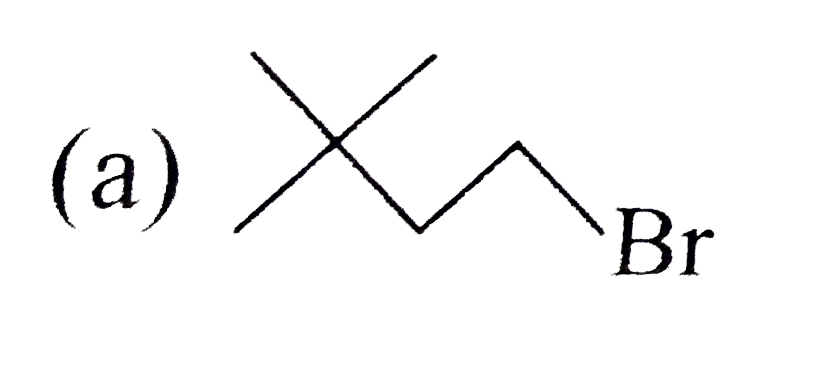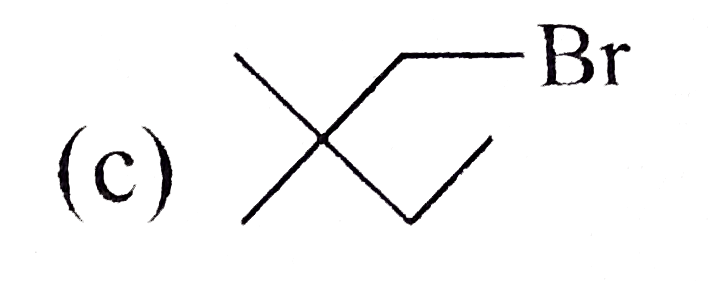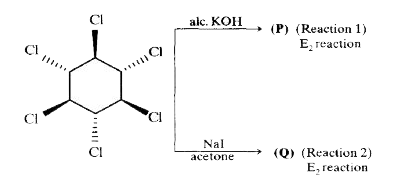The following bimolecular eleimination reaction (E2)is carried out with different halogen leaving groups the cent yield of the two product (2-hexene and 1-hexene ) for each leacing group is lested below .

which of the following statement is (are) true concerning this seris of E2 reaction ?
Based on the Pka s of the the conjugate acid I− is the best leaving group and F− is the poorest leaving group
When I−Br−andCl− aarae used as leaving group , Zaitsev 's rule is gollowd
F−is the stogest base (and therefore the poorest lec=ving group) an dthe transition state for reaction with fluorde as the the leaving f=group has the double bond charaster
a,b,c are true
The correct Answer is:d
Informative question .
Topper's Solved these Questions
- ALKYL HALIDESBOOK - MS CHOUHANCHAPTER - ALKYL HALIDESEXERCISE - Level 1 (Q.61 To Q.10)
24 Videos
- ALKYL HALIDESBOOK - MS CHOUHANCHAPTER - ALKYL HALIDESEXERCISE - Level 2 (Q.7 To Q.3)
14 Videos
- ALKYL HALIDESBOOK - MS CHOUHANCHAPTER - ALKYL HALIDESEXERCISE - Level 2 (Q.1 To Q.10)
11 Videos
- HYDROCARBONS (ALKANES)BOOK - MS CHOUHANCHAPTER - HYDROCARBONS (ALKANES)EXERCISE - Level 1 (Q.31 To Q.50)
1 Videos
Similar Questions
Knowledge Check
Which of the following statements are true for group-2 elements?
ALattice energy of oxalates, fluorides decreases from Ca to Ba.BAll form nitrides in air.CThe solubility of the hydroxides increases from Ca to Ba.DAll are correct.For an SN2 reaction which of the following statements are true:-
AThe rate of reaction is independent of the concentration of the nucleophileBThe nucleophile attacks the C-atom on the side of the molecule opposite to the group being displacedCThe reaction proceeds with simultaneous bond formation and ruptureDNone of theseWhich of the following cannot undergo E2 reaction ?
A B
B C
C DNone of these
DNone of these
Rate of Bimolecular elimination (E2) reaction for the following :

View SolutionWhich of the following statements is most likely true concerning the given reaction?
2A(g)+B(g)→2C(g)+D(s)
View SolutionWhich of the following compounds cannot give E2 reaction with strong base?
View SolutionHow many halogen atoms will be removed in the following E2 reaction ?

View SolutionHow many halogen atoms will be removed in the following E2 reaction ?

View Solution
